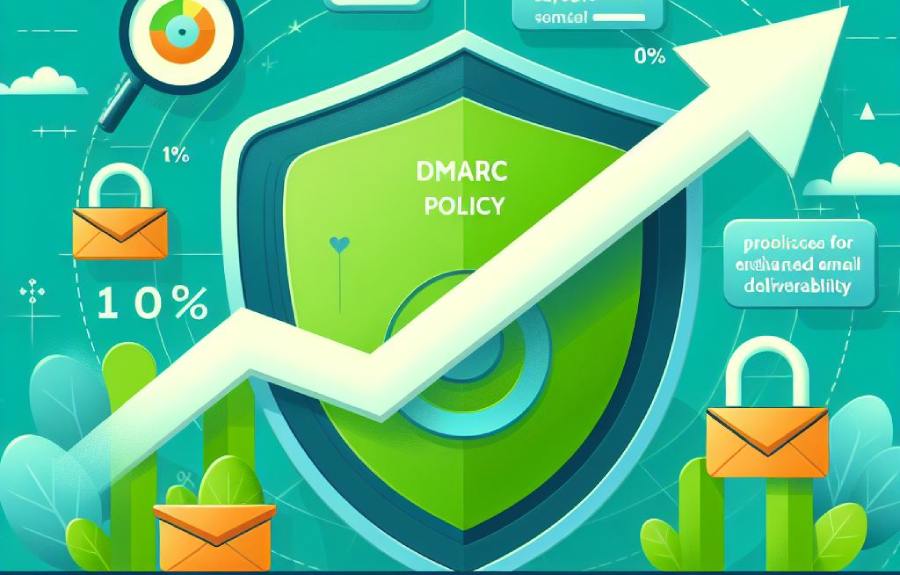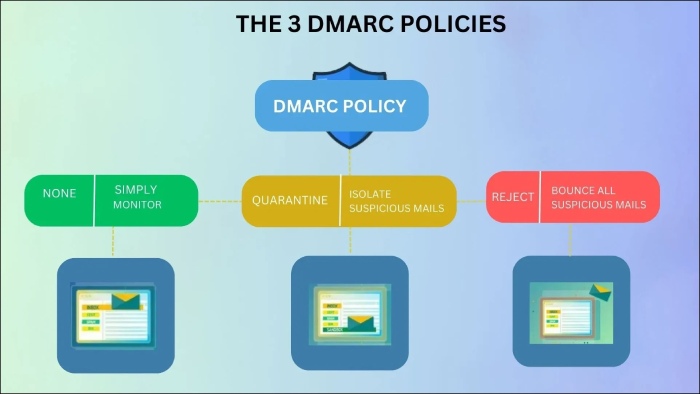In theory, implementing DMARC is as simple as publishing a DMARC record with your DNS. Well, only if things were this straightforward. As businesses expand and email ecosystems become more complex, it becomes challenging for security teams to prevent email-based attacks and ensure that no legitimate emails are marked as spam.
We understand that employing DMARC is a complex task as it demands a deliberate, methodical approach, especially when it comes to advancing policies. It might seem like taking a strategic route is about the technical elements, but there’s more to it. Apart from the technical aspects, which certainly cannot be overlooked, following a tactical approach when employing DMARC policies also gives you a comprehensive understanding of email authentication dynamics and the impact they can have on your organization.
In this article, we’ll take you through the best practices that you should be aware of when advancing DMARC policies— moving from p=none to p=quarantine to p=reject.
How to Prepare for DMARC Policy Progress?
Are you considering advancing DMARC policies? Hold on! Before you jump the gun, here are a few things that you should know beforehand for a safe and secure email ecosystem:
Respond; Don’t React
Do not rush into advancing the policies too soon. While you might be tempted to see how different policies impact your email deliverability, it is always a good idea to have a proper understanding of DMARC standards and all your email sources.
Prioritize DMARC Alignment
Before you go on to implementing DMARC policies, make sure that all the known email sources are in DMARC alignment. This is only possible when the domain in the email’s “From” header matches with the one specified in authentication mechanisms— SPF and DKIM. Once the message passes one of these checks, it qualifies to proceed for DMARC alignment.
Know Your DMARC Compliance Percentage Rate
Analyzing and operating on the basis of the DMARC compliance rate is crucial for effective DMARC policy progression. In most cases, if the DMARC compliance rate is above 98%, your domain is all set for DMARC policy advancement.
But keep in mind that this might not always be the case. For instance, in situations where unauthorized email sources are identified, like a third-party vendor not adhering to your standards, you can tighten your DMARC policy before reaching this compliance threshold.
What are the Best Practices to Follow When Progressing Policy?
Your email ecosystem is a dynamic space where the good, bad, and the ugly come together. But how do you differentiate between them? Your email landscape evolves with your business, this means the measures to protect should evolve too.
So, advancing your DMARC policy is like upgrading your email’s security system, keeping pace with the ever-changing threats, and ensuring that only the ‘good’ emails make it through.
Let us look at some of the key things you should keep in mind when progressing your DMARC policy.
Familiarize Yourself with the Implications of DMARC Policies
Who doesn’t want full protection from phishing and spoofing attacks? In pursuit of comprehensive protection against such attacks, remember that advancing policies isn’t just about keeping threat actors and their nefarious activities at bay.
When progressing DMARC policies for your domain, it is crucial to be aware of the operational impact of each policy level— p=none, p=quarantine, and p=reject. Moreover, know that moving from monitoring to an enforcement stance can significantly affect how your emails are received and handled.
Apply DMARC pct Tag
The percentage tag or the DMARC pct tag is an optional yet critical aspect of DMARC implementation that specifies the percentage of emails that would be put under scrutiny by email authentication tests. Setting a pct tag allows you to employ the authentication policies to only the specified percentage of emails instead of all of them. That’s not all! This strategic approach facilitates a smoother transition to stricter email authentication practices by helping you monitor the impact on email deliverability
Deliberate DMARC Policy Progression
It should come as no surprise that effective DMARC policy progression is one that is implemented gradually. If you rush into building a strong defense mechanism with p=reject, you run the risk of blocking out legitimate emails or even disrupting normal, essential communication channels. So, it is recommended that you take a phased approach, as shown below:
| Week | Policy | Percentage |
| 1 | none | pct=25% |
| 2 | none | pct=50% |
| 3 | none | pct=75% |
| 4 | none | pct=100% |
| 5 | quarantine | pct=25% |
| 6 | quarantine | pct=50% |
| 7 | quarantine | pct=75% |
| 8 | reject | pct=1% |
| 9 | reject | pct=25% |
| 10 | reject | pct=50% |
| 11 | reject | pct=75% |
| 12 | reject | pct=100% |
Ensure DMARC Maintenance
Once you have mastered the art of DMARC policy progression and achieved p=reject, it is now time to maintain enforcement for DMARC compliance. An easy way to do this is by regularly conducting various checks of SPF records, monitoring DKIM key rotation, keeping a tab on DMARC data, leveraging reports, and incident management.
Conclusion
Navigating the complex landscape of DMARC authentication and policy progression is no easy feat, especially when the stakes are high! If you’re struggling to keep up with the ever-evolving cybersecurity landscape, trust us to protect your domain against malicious attacks. Want to know how DuoCircle can help bolster your defenses? Speak to one of our experts today!


